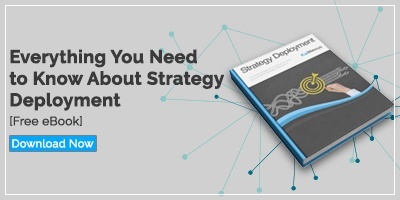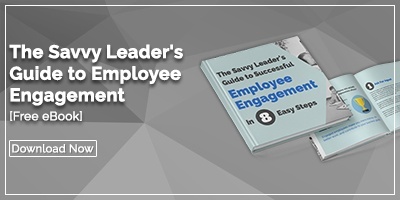 Hoshin Kanri is a popular approach to strategic planning and deployment. It provides a roadmap to achieving an organization’s most important three to five-year objectives, while at the same time achieving continuous, daily improvement.
Hoshin Kanri is a popular approach to strategic planning and deployment. It provides a roadmap to achieving an organization’s most important three to five-year objectives, while at the same time achieving continuous, daily improvement.
(If the approach is new to you, start here for the background.)
While the Hoshin Kanri methodology is relatively straightforward, there are a few common errors that send it off the rails. We’ve looked to the literature to see what the experts have to say about each frequent mistake. Hopefully this post will help you avoid or correct them. (It will also make a handy reading list.)
1 – Failure to Engage Front Line Employees in Developing the Strategic Plan
A Hoshin plan is not something that is developed in the boardroom and handed down to employees as an edict. Instead, it is the result of collaboration and use of the Catchball technique. Management sets the direction and chooses the destination, but everyone should be involved in the discussion about how to get there.
“The term Policy Development is taken from the Japanese Hoshin Kanri, meaning “to show the way.” It is a management tool, or rather a management philosophy, where the whole organization is involved in the strategic development process. Hoshin Kanri is based on the idea that every associate is an expert in his own job. This means that it is essential to utilize this expertise -also when you do strategic development – to be delegating as much responsibility to the associates as possible.
- From Strategy to Action: Policy Deployment in Daily Management – Lars Tegl Rasmussen and Kurt Ottesen.
2 – Poor Communication
Too often, communicating the strategic plan becomes an afterthought. It may be introduced in the annual company meeting, but never fully explained in a way that is meaningful for employees. This degrades its value and impedes success. Effective and frequent communication with a two-way feedback loop is essential.
“The root cause of the majority, if not all, of the organizational problems can be found in poor communication. Typically, when mapping value streams, regardless of the level of aggregation, the greatest sources of variability lies within the interfaces between organizational groups (i.e., departments, buildings, factories, etc.). Poor communication leads to a number of interpersonal problems ranging from unclear expectation, declining performance, finger pointing, interdepartmental rivalries, power struggles and more.”
- The Hoshin Kanri Forest: Lean Strategic Organizational Design – Javier Villabla-Diez PhD
3 – Infrequent Progress Reports
Like all other long-term strategic planning techniques, Hoshin Kanri is only useful if it becomes part of how the business is managed on a day-to-day basis. Putting the plan in a drawer and hoping for the best is sure to disappoint. The approach is meant to be active with constant review and adjustment.
“Hoshin Kanri encourages the ability to be adaptive. Since long-range planning is based on information monitored from the business system, the planning process itself must be adaptive and capable of responding to changes in the business system. This means that management of the business system must include a regular review or assessment that indicates whether or not the system plan is faltering and must be adjusted or changed. This is achieved through regular reviews of both the planning-implementation progress, as well as the application of the planning methodology itself. Thus, Hoshin becomes an enabling feature in the continuous improvement of the company’s management process and serves as an information feedback loop that permits continuous responses to the winds of business change.”
- Hoshin Kanri: Policy Deployment for Successful TQM – Yoji Akao

4 - Misaligned Goals and Objectives
Close alignment between individual objectives and the strategic goals of the organization is essential, primarily when working toward long-term breakthrough objectives. When individuals feel disconnected from the mission, employee engagement suffers, and decision making is impeded. On the other hand, when people see how their work fits into the broader strategy, they are more willing to contribute discretionary effort in furtherance of the goals.
“All the members of an organization must have a clear understanding of the organization’s vision and goals. With all members in perfect alignment and clearly understanding their own role in the achievement of those Goals as they are trained and encouraged to work together to achieve them, then the productive power of the organization would be optimal.
- Hoshin Kanri: The Strategic Approach to Continuous Improvement – David Hutchins.
If you’ve struggled with any of these challenges, don’t give up. Revisit the Hoshin principles and pay attention to these common pitfalls. Take advantage of the many available resources, such as the works we’ve mentioned here to support your journey to your game-changing achievements.

![[Watch Now] Cascading Strategy Through Hoshin Kanri](https://no-cache.hubspot.com/cta/default/326641/dd5ad176-fb74-4e1e-bf28-ff4d966d1701.png)



Add a Comment